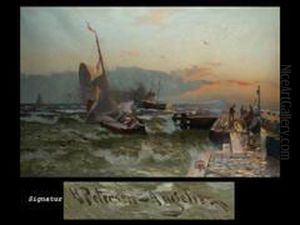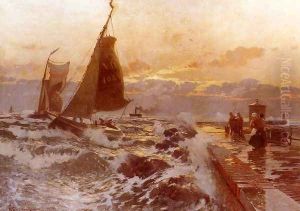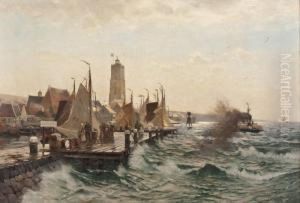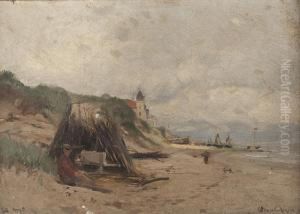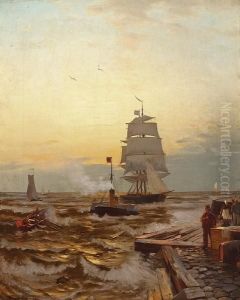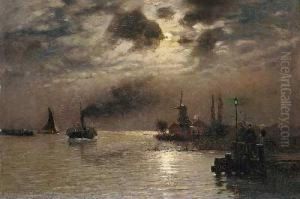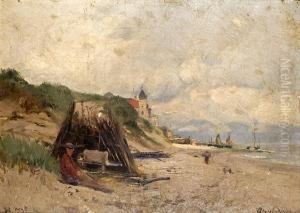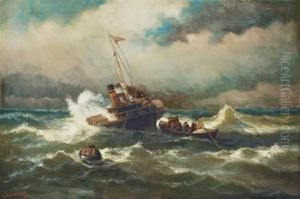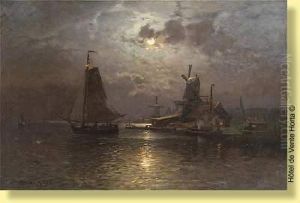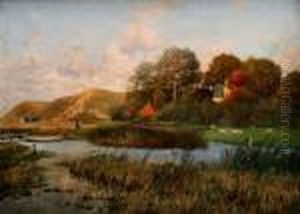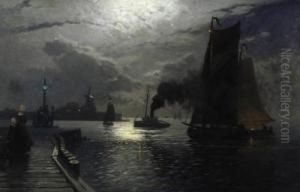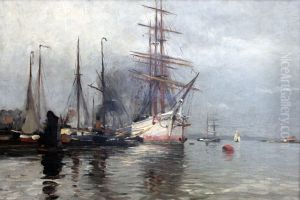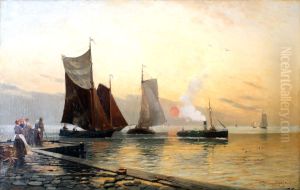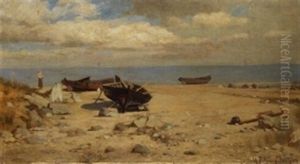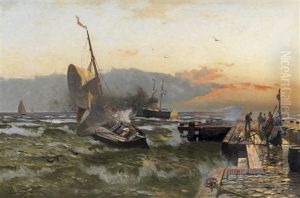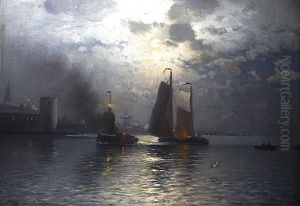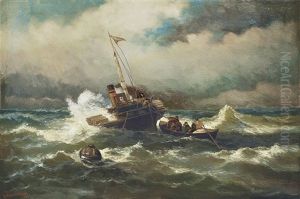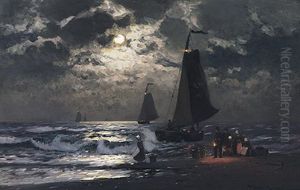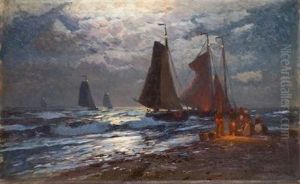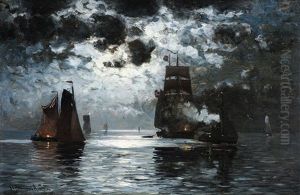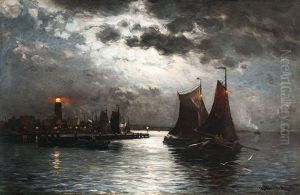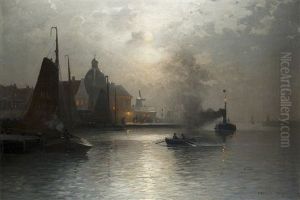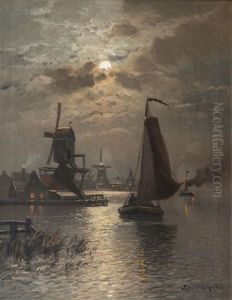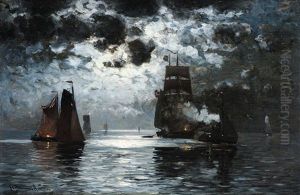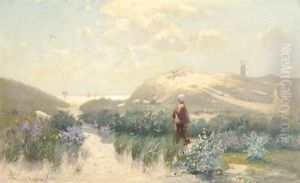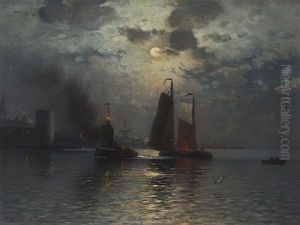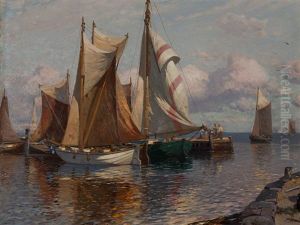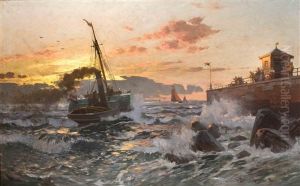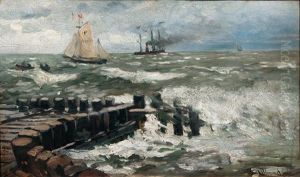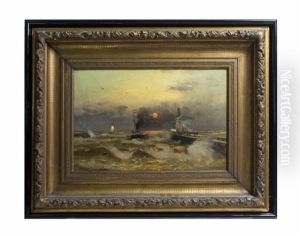Heinrich Petersen-Angeln Paintings
Heinrich Petersen-Angeln was a German-Danish painter known for his landscape and maritime paintings. Born on February 23, 1850, in Angeln, a region in Schleswig then under Danish rule, Petersen-Angeln developed an affinity for the sea and natural surroundings early in his life, which would later heavily influence his artistic work.
Petersen-Angeln studied at the Royal Danish Academy of Fine Arts in Copenhagen, where he was influenced by the Danish Golden Age of painting, a period that emphasized the beauty of the Danish landscape and the lives of its people. His style was also affected by contemporary artistic movements such as Realism and Impressionism, although he maintained a distinct personal approach that often focused on the interplay of light and shadow.
Throughout his career, Petersen-Angeln exhibited his work in various venues, including the Berliner Akademie and the Glaspalast in Munich. His paintings often depicted the rugged coastlines of his homeland, the movement of the sea, and the daily life of fishermen. His skill in capturing the nuances of natural light and atmospheric conditions was admired by his contemporaries.
Despite being a prolific artist, Petersen-Angeln did not gain the same level of fame as some of his peers, and his work was more appreciated posthumously. He died on May 19, 1906, in Munich, Germany. Today, his works can be found in different art collections across Europe, and they continue to be celebrated for their contribution to the maritime and landscape genres of the late 19th century.
